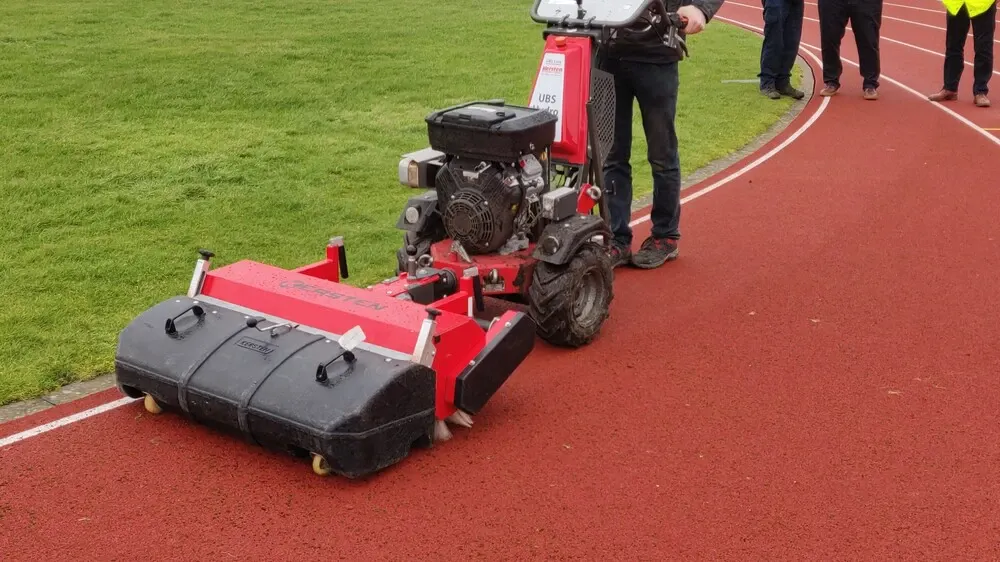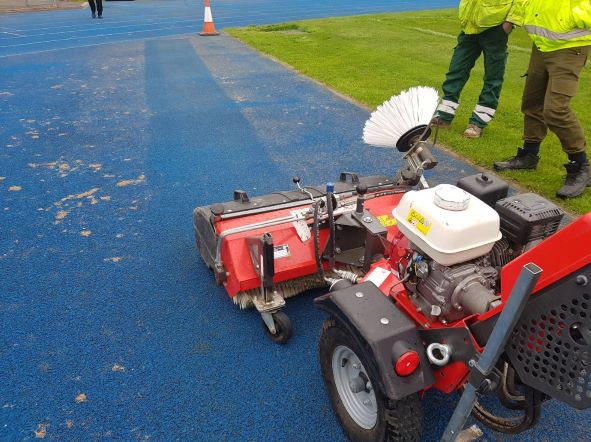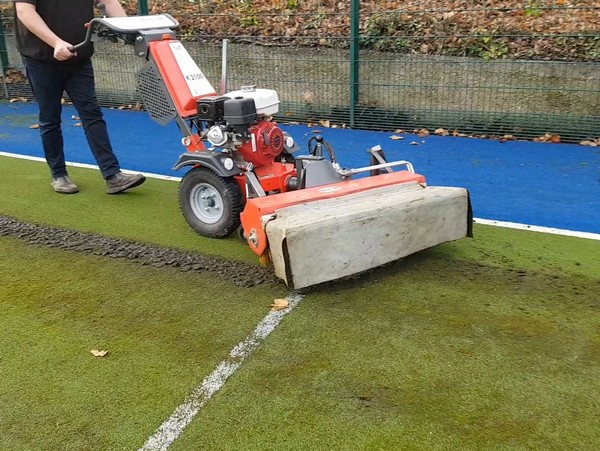Polymeric Surface Maintenance

Polymeric Surface Maintenance
Maintaining Polymeric Surfaces: Ensure Long-Lasting Performance and Safety
Polymeric sports surfaces provide excellent performance with their slip-resistant and low-maintenance features, ideal for sports courts and playgrounds. However, their porous design can trap debris and dust, leading to potential drainage issues, algae and moss growth if not regularly maintained. To prevent these problems and extend the life of your surface, it is important to follow a routine maintenance plan that includes cleaning and preventative measures. Regular upkeep will help maintain the surface’s functionality and appearance, ensuring a safe and enjoyable experience for users.
Maintaining Polymeric Sports Surfaces for Longevity and Safety
Polymeric surfaces typically consist of a permeable foundation of crushed, graded stone, topped with porous asphalt. The playing surface is created with a coloured polyurethane binder and rubber crumb or powder, applied directly to the asphalt or a polyurethane and rubber cushion layer. These surfaces are popular for sports courts and playgrounds due to their durability and comfort.
Why Proper Drainage and Regular Maintenance Matter
Maintaining proper drainage is crucial for polymeric surfaces. Without it, the surface can accumulate moss and algae, leading to slip hazards and safety concerns, especially for children. Regular maintenance not only ensures a safe playing environment for activities like tennis but also keeps the surface looking attractive and well cared for.
How to Maintain Your Polymeric Surface
Maintaining your polymeric surface is simple with the right tools and routine. Here are some essential steps:
- Regularly sweep or vacuum leaves and other debris from the surface.
- Occasionally wash the surface using a hot water weeder to remove stubborn dirt and prevent moss and algae build-up.
- Apply prophylactic treatments of moss-killer and algaecide to prevent the growth of harmful organisms that can damage the surface and cause slip hazards.
Prevention is Key
Prevention is essential in maintaining the longevity and safety of your polymeric surface. Trimming trees and removing organic debris such as leaves, pine needles, and flowers can prevent moss and algae from taking root. These materials should not be allowed to remain on the surface for extended periods, as they can block drainage and create a breeding ground for moss.
Kersten K-series or UBS 2-wheel tractors, equipped with our sweeping attachments, are ideal for clearing most debris and moss from the surface. This process works best on a dry or slightly damp surface. The brush height is adjustable to apply just the right pressure for optimal cleaning.
Deep Cleaning Tips for Persistent Material
For deeper cleaning, especially for material embedded in the surface, follow these steps:
- Use the sweeper without the collection box and angle the brush to create a small wave of water in front of it.
- This wave action will help dislodge debris trapped in the porous surface and bring it to the top, making it easier to collect and remove.
- For best results, let the material dry before sweeping and collecting it.
By following these maintenance and prevention tips, you can ensure your polymeric surface stays safe, functional, and visually appealing for years to come.
Articles about Polymeric Surface Maintenance
To maintain polymeric sports surfaces, regular sweeping or vacuuming is essential to remove debris like leaves and dirt. Occasional washing with a hot water weeder and applying moss-killer can prevent the buildup of algae and moss, ensuring the surface remains safe and functional.
Preventing moss and algae growth on polymeric surfaces involves maintaining proper drainage and regularly cleaning the surface. Using a prophylactic treatment like moss-killer and algaecide, along with trimming nearby trees to reduce organic debris, can help avoid slip hazards.
Proper drainage is crucial because it helps prevent water from pooling on the surface, which can lead to algae and moss growth. Poor drainage can also cause safety issues and reduce the surface’s lifespan, making regular maintenance and ensuring effective water flow essential.
Yes, a pedestrian sweeper with adjustable brush height is effective for removing debris from the surface. For deeper cleaning, use the sweeper without the collection box and sweep in wet conditions to dislodge material trapped in the porous layers of the surface.
If your polymeric surface becomes slippery, it’s likely due to moss or algae growth. Cleaning the surface with a hot water weeder and applying an appropriate moss-killer can help restore grip and ensure the surface is safe for use.

